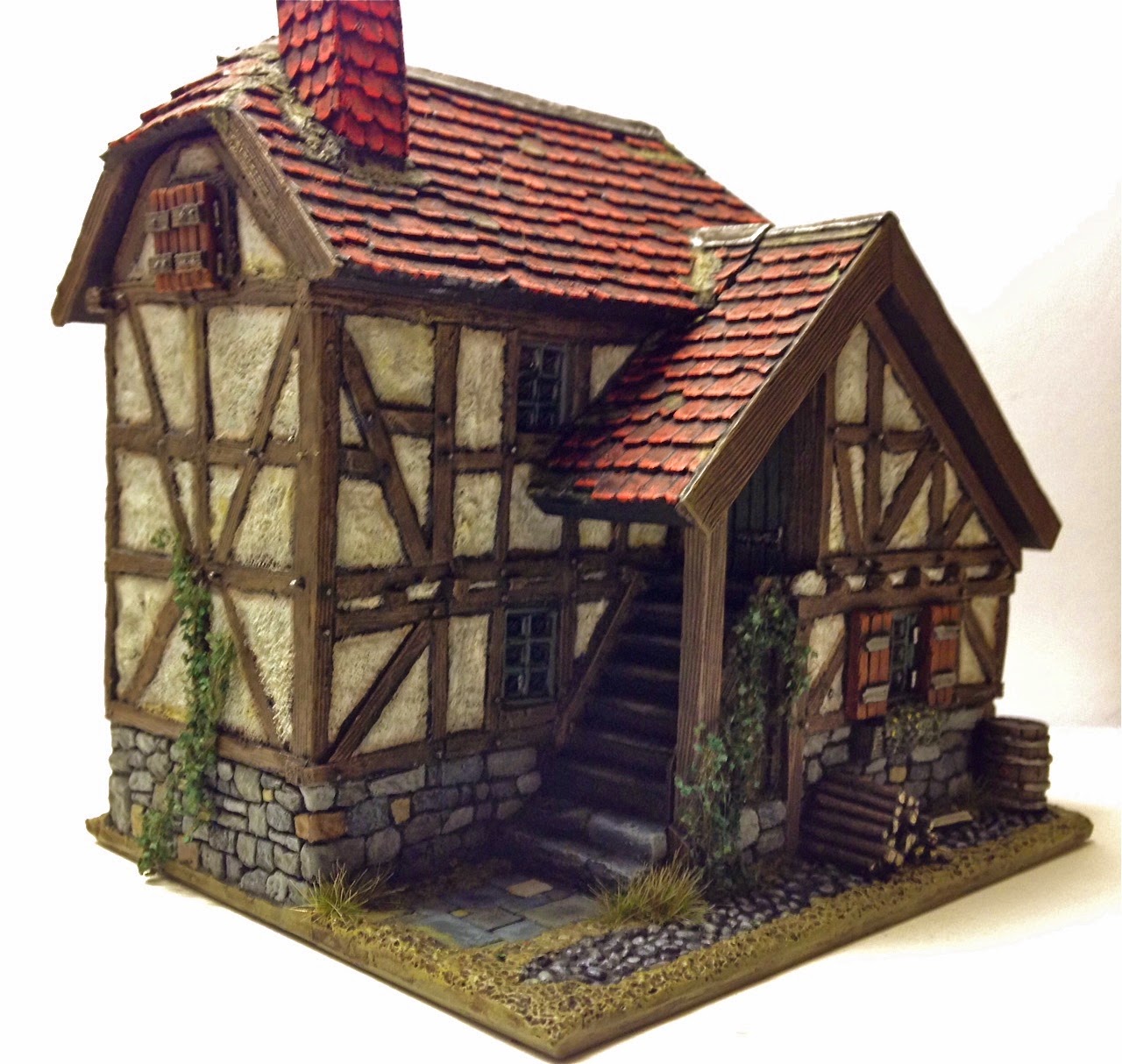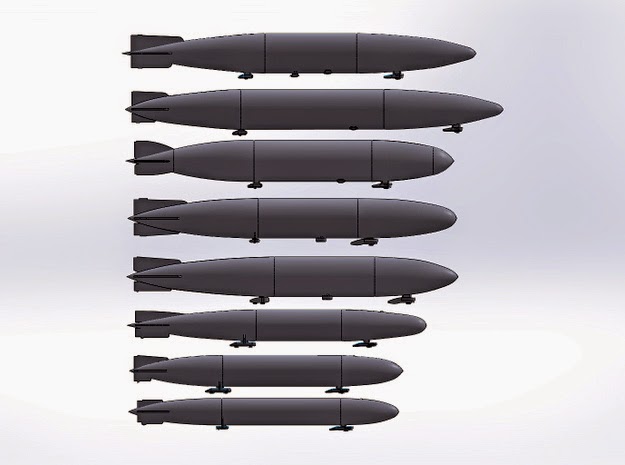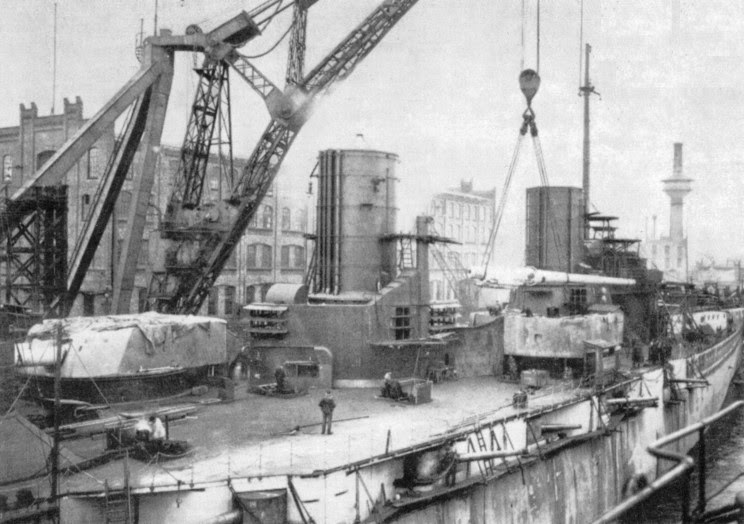The Lindenau House from Grandmanner's 28mm Napoleonic collection.
In 2014 I had the privilege of visiting the now docile battlefield at Woerth in a rural part of beautiful Alsace. Earlier the same year I was bordering on fiscal collapse by melting my Visa at the ever-bustling Salute, spending a sunny April weekend in London. Both these visits are combined in this week’s project.
The unpainted resin model with a 28mm miniature for size comparison.
Building a collection of miniatures for a certain period often has us focus on the soldiers and their colourful uniforms, dashing cavalry squadrons or hard hitting artillery batteries with the occasional diversion into character units. But terrain has for my part so far taken the backseat. However, things are about to change.
Front view of the finished model.
Personally, painting military miniatures always takes me into a dreamy state, where I project myself to the era of the soldiers I’m painting. Whether they be the snappy marching columns of Napoleon or the well-drilled grenadiers of Frederick the Great, I find myself mentally marching alongside them.
The village of Woerth as it looked in August 2014.
My fiancé on the left, Johanna, was kind enough to join my battlefield walk.
This imaginational access to a period in history gets further nourishment when the painted soldiers march onto the wargaming table – if the scene is properly set that is. Setting the scene with the right quality of terrain can really enhance the experience of one’s miniature collection, and help make that imaginative leap back in time to a certain faithful day in history.
Picture of the back side, with worn down stairs
and stacked firewood adding details to the model.
and stacked firewood adding details to the model.
Partaking in the very active wargaming scene in Stockholm, I’ve had two big inspirations when it comes to terrain. Fellow club member Michael, who meticulously addresses all the small details on the table and have a sharp eye for what will work and how to arrange it. My second big inspiration, and a very accomplished painter, is wargaming friend Rickard, who is among the most talented terrain constructors I’ve come across.
Further inspiration for the color scheme.
Painting by Edouard Detaille "La charge du 9e régiment de Cuirassiers à Morsbronn"
With these two gentlemen in my hobby-sphere I have decidedly made a plunge into the wonderful world of terrain. First stop on this journey is my Grandmanner “Lindenau House” from their 28mm Napolenonic range. The model was purchased in London at Salute from Grandmanner’s vending stall, with a clear aim to apply it as a Alsacian house for my Franco-Prussian collection.
Prussian troops crossing through Alsace
after the initial victories of Woerth and Spichern.
Visiting the battlefield at Woerth last summer fuelled further inspiration to this painting project, and with my holiday pictures from this sleepy corner of Alsace in hand, I set out to finished this lovely detailed model.
The result is the product of about 4-5 full afternoons of painting. The target was to go for a classic color scheme resembling what can be found on the paintings from the battles of Wissembourg, Spichern and Woerth. I imagine it would work very well for a timeframe of 1740-1918 – enabling me to cover the SYW, Napoleonics, Franco-Prussian and Early WW1 “Battle of the Frontiers” with this model.
The Lindenau House could easily be adopted for other periods,
here shown in a SYW scene, as Frederick scouts for an Inn with
good potato soup.
Also purchased from Granmanner at Salute was a XL redoubt position with three canon positions incorporated in the superb resin cast sculpting. This was carried home as an unplanned impulse purchase, but fitting nicely into my 1812 Borodino project.
I look forward to getting more brush time with Grandmanner’s excellent models in the months to come.
Thank you very much for reading!




















